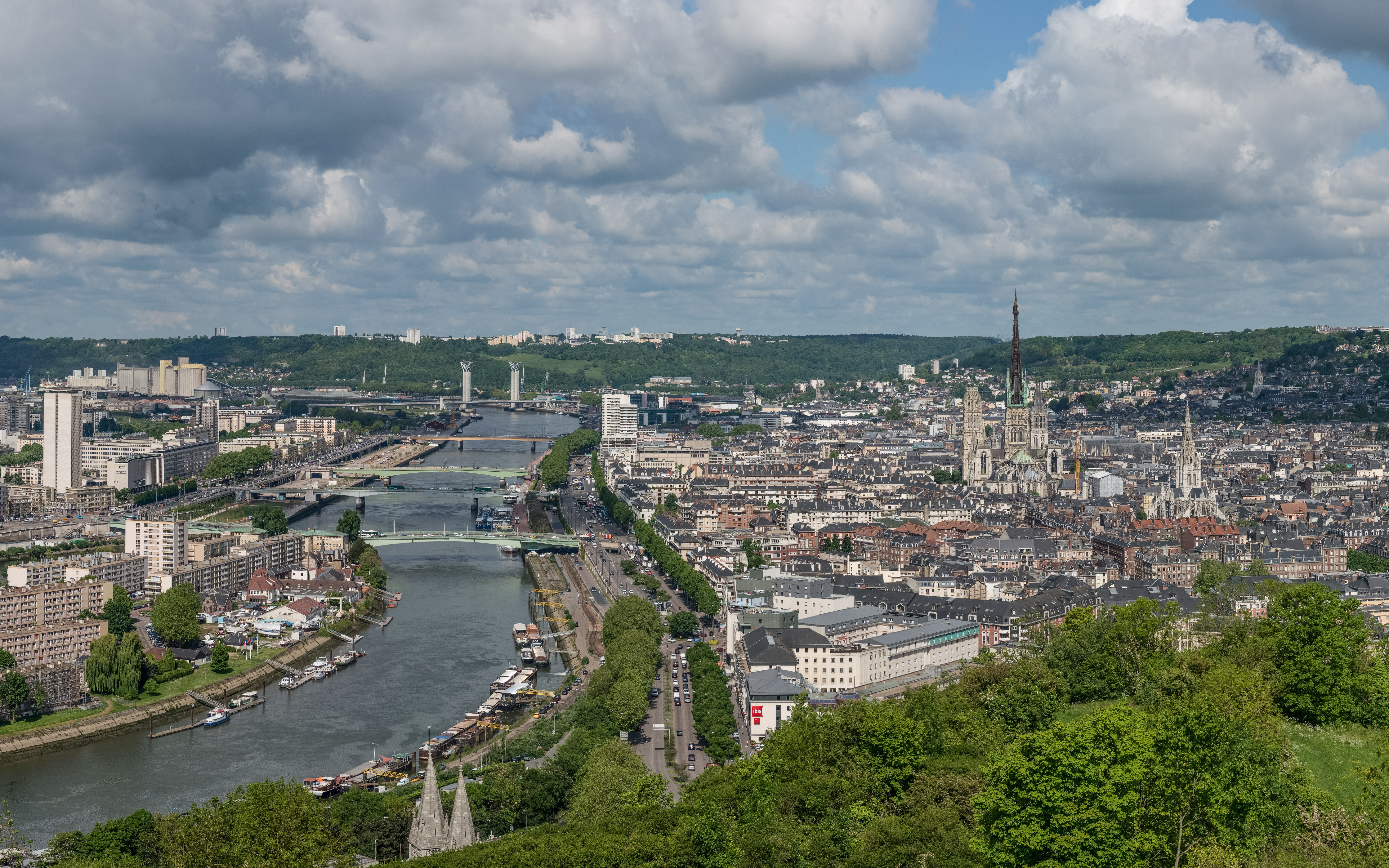
In 2016, France reorganized its administrative regions, combining Haute-Normandie (Upper) and Basse-Normandie (Lower) into a unified Normandie, to the delight of its inhabitants. But we’re keeping the division for our tour de France because it’s a large region with much to share.
Normandy owes its name to its association in the late dark ages with Viking raiders, or Norsemen. We’ll explore the invasions to and from Normandy in part 3.
For now, we take a look at the rich contributions to art and literature, beginning in the ancient city of Rouen, the region’s capital. Located on the River Seine, it was founded by the Gauls and has served as a center for many dynasties, including the Merovingians, the Dukes of Normandy and Anglo-Norman kingdoms.

Rouen boasts beautifully-preserved half-timbered houses and other delights of medieval architecture. The Gros-Horloge is a 14th-century astronomical clock and one of the oldest mechanisms in France.

The Cathédrale de Rouen is among its most famous attractions and was painted by Claude Monet.

Normandy gave birth to the Impressionist art movement. In the 1870s, Monet named his hazy painting of the sea at Le Havre “Impression, soleil levant” (Impression, sunrise), and that became the name of the style of painting by free-thinking artists of the late 19th century seeking to capture scenes of nature and everyday life.

Initially met with derision by the art world, the Impressionists now are beloved. Monet was their leader and the countryside of Normandy a favorite subject. Monet’s home and beautiful gardens at Giverny are a top tourism draw.

Other famous French people, and even an English king, were born in Rouen. Joan of Arc was tried and burned at the stake here.
Notable from a writer’s perspective is the city’s contribution to literature. Gustave Flaubert hailed from Rouen. His debut novel, Madame Bovary, which is credited with establishing modern realist narration, is set in Rouen and the nearby countryside. (See this week’s video for our take on a couple of Bovary films.)

Another literary Norman was Flaubert’s protégé, short story master Guy de Maupassant. One of his stories, The Englishman of Etretat, was inspired by a dramatic incident involving the near drowning of English poet Algernon Charles Swinburne, who had taken refuge on the Normandy coast from the constraints of Victorian society. A very flowery account of Swinburne’s ordeal in the surf and its aftermath, along with de Maupassant’s role in it, is a fascinating read, with a cameo appearance by Oscar Wilde. Victor Hugo, who spent significant time in the area, also contributes to the tale.

With the exhaustive list of “must-sees” in Normandy, a month seems insufficient for a trip there, even a virtual one. We’ll try our best to provide an enticing overview in our four week stop. Join us next week for some tasty recipes, and don’t even think about counting calories!

